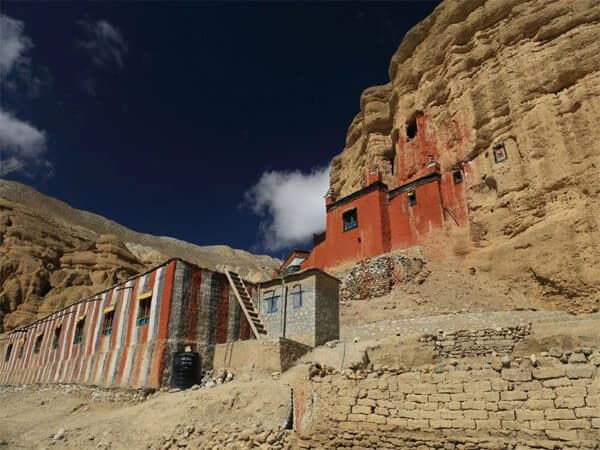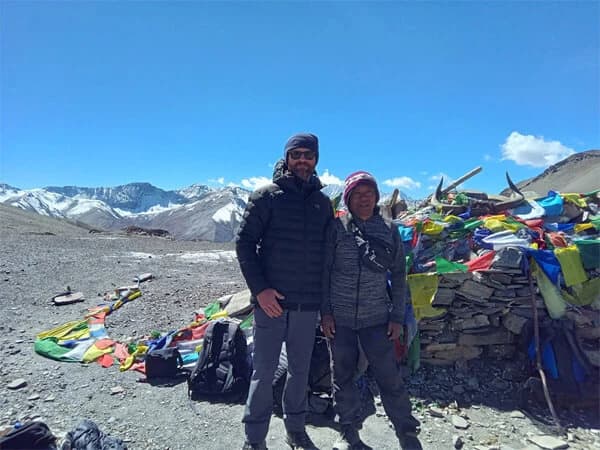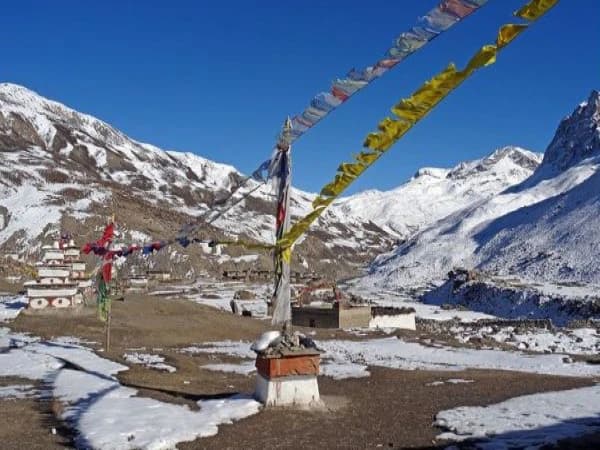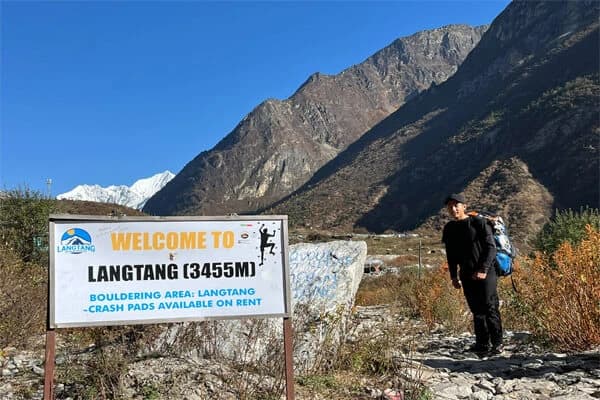The best time for upper dolpo trek is druing the spring and autumn season. During this month weather is stable, tempature is mild, skies are clear. This feature make it idal for trekking through the remote, and rugged terrain. The monsoon rains are minimal due to dolpo rain shadow location, ensuring better visibility and safer trails. winter can be extremely cold and challenging, while summer can bring occasional rain making spring and sutum the most suitable periods for an unforgettable trekking experienc in Upper dolpo
The Upper Dolpo Trek is a journey into one of Nepal's most remote and mystical regions. Situated in the far western part of the country, this trail features beautiful landscapes, old monasteries, and hamlets that have been resistant to time. The unusual way of life in the region, based on Tibetan Buddhism, makes the trek more interesting. The rugged terrain provides stunning vistas ranging from valley to mountain, so it is ideal for people who want an adventure away from present-day destinations.
Overview of Upper Dolpo's Climate
The Upper Dolpo region is located high up in the Himalayas, and as such, it has a unique climate. Due to its high altitude, the Upper Dolpo region experiences a cold and harsh climate, with temperatures often falling below freezing, particularly during winter.
Different seasons have their characteristics. For example, during the summer months (from June to September), temperatures tend to be milder compared to other seasons. Still, occasional rains occur around this time, though dry weather predominates anyway.
Winters (November to March) are notably severe, characterized by heavy snows, thus making them inaccessible. Meanwhile, its high altitude alongside nearby hills and the fact that it lies within a rain shadow created by the Himalayas greatly contribute to its dryness and low rainfall rates, leading to an arid climate.
All of these aspects work together to create a harsh and fascinating scenery where the weather affects people's day-to-day activities.
Trekking Seasons in Nepal
Nepal's trekking seasons offer diverse experiences throughout the year, each with its own charm and challenges.
Spring (April to June)
Spring is a delightful time for trekking, with mild weather and clear skies. The temperatures are comfortable, making long hikes more enjoyable. One of the biggest perks of trekking in spring is the vibrant flora; rhododendrons and other wildflowers bloom in abundance, creating a colorful landscape. Wildlife is also more active during this time, offering trekkers a chance to spot various species. Additionally, spring is a season of festivals in many regions, allowing you to immerse yourself in local culture and traditions.
Autumn (September to November)
Autumn is perhaps the most popular trekking season, and for excellent reason. The weather is stable, with cool, crisp air and minimal rainfall, making it ideal for trekking. The landscapes are at their most scenic, with clear mountain views and golden hues from the autumn foliage. Major festivals mark this season, offering a unique glimpse into local customs and celebrations, rich in cultural experiences. The combination of perfect weather and stunning scenery makes autumn a favorite for many trekkers.
Monsoon (June to August)
Trekking during the monsoon season can be challenging due to heavy rainfall and slippery trails. The weather conditions can be unpredictable, with frequent downpours and humid air. However, if you're up for the challenge, the monsoon offers lush, green landscapes and fewer crowds on the trails. Rain brings life to plants and produces the strongest waterfalls. It's important to be aware of potential risks such as landslides and leeches, but for those who are prepared, the off-season benefits include lower prices and a more solitary experience.
Winter (December to February)
Winter trekking presents its own set of challenges, with cold temperatures and snow-covered trails. The weather can be harsh, especially at higher altitudes, requiring special preparations such as warm clothing and proper gear. Despite the difficulties, winter offers unique experiences like trekking through snow-covered landscapes and enjoying the tranquility of less-crowded trails. For those who are well-prepared, the serene beauty of winter scenery and the quietness of the season make it a rewarding experience.
Table of Trekking In Different Seasons
Here's a table comparing trekking seasons, summarizing the key points for each season.
| Season |
Advantages |
Disadvantages |
Weather and Temperature |
Trail Conditions |
Crowd Levels |
Accommodation Availability |
Wildlife Sightings and Natural Beauty |
| Spring (March to May) |
Mild temperatures, blooming rhododendrons, vibrant landscapes |
Higher crowds, potential for rain |
Mild temperatures, warmer days |
Generally good, may be muddy |
Moderate to High |
High |
Excellent wildlife sightings, lush scenery |
| Summer (June to August) |
Less crowded, lush green landscapes, vibrant vegetation |
Heavy rainfall, leeches, slippery trails |
Hot and humid, heavy rains |
Often muddy, slippery |
Low |
Moderate to Low |
Rich vegetation, fewer wildlife sightings |
| Autumn (September to November) |
Clear skies, moderate temperatures, stunning views |
Cooler temperatures at high altitudes, higher crowds |
Cool and dry |
Generally good, stable |
High |
High |
Beautiful clear views, some wildlife sightings |
| Winter (December to February) |
Fewer crowds, serene landscapes, clear views |
Cold temperatures, snow and ice on trails |
Cold, freezing temperatures |
Snowy or icy, potentially challenging |
Low |
Low |
Limited wildlife sightings, stark beauty |
Factors to Consider When Choosing the Best Time
Several variables influence when you should choose your trek. Every element plays a pivotal role in planning a trek, from personal fitness and acclimatization to wildlife viewing and cultural immersion; this elucidation aids in deciding on the best time for your trip, ensuring that it runs safely, and pleasantly, and remains in memory forever.

Personal Fitness and Trekking Experience
Your trekking schedule depends on your fitness and experience. If you are an astute and well-adjusted trekker, then you may feel at ease tackling arduous hikes during the off-season. However, for novices and inexperienced hikers, the periods when weather conditions are stable and trails are not crowded should be their priority. Therefore, the correct season may drastically change comfort levels as well as safety aspects that are essential during treks.
Altitude and acclimatization
The elevation of the place is important when trekking. Higher altitudes increase the risk of altitude sickness, so planning for a paisa with proper acclimatization is essential. Therefore, in most cases, the best time to get used to them is during seasons with stable weather patterns and moderate climate conditions. Trails are frequently crowded during peak trekking seasons, facilitating acclimatization and providing help if needed by visitors who have become unwell due to the high altitudes. Plan enough time for your body to acclimatize to avoid altitude-related problems.
Availability of Permits and Logistics
For different trekking areas, specific permits are required, though they differ from season to season. During peak seasons, there may be challenges in obtaining permits and making reservations. On the other hand, in off-peak times, it may be very easy to secure all that you need, but with little or no services. As you hike while plotting your course, take into account every necessary document. There are also periods of the year when some areas issue permits; hence, check if there is such a restriction beforehand.
Trekking Goals and Preferences
Take note of your trekking preferences and goals when selecting a time. If you want to view beautiful landscapes and take lovely photos, you should choose seasons that have clear skies and vibrant surroundings for your trek. On the other hand, if you want to understand a different culture from others, you can gain insights by visiting local festivals or events, which may enrich your journey. When you walk in harmony with what drives you, this adventure becomes more fulfilling.
Scenic Photography
If one wants to capture amazing scenery, then one must time their hikes right when it’s favorable to weather conditions. Imagine the clarity of pictures captured under blue skies, free from background lighting interference or excess clouds. The spring and fall seasons are some of the best times for capturing vivid colors as well as spectacular natural backgrounds. Therefore, plan your trekking schedules around such periods to avoid missing stunning photo opportunities.
Cultural Immersion
A trekking experience may be unique during certain periods of the year. Local festivals, cultural rituals, and community gatherings can add flavor to your trekking experience. Find out what is happening at specific times on that area's cultural calendar, and try to hike there during those days so that you can take in some native cultures while engaging local people in activities. This could not only enhance your understanding of the local culture but also make trekking more engaging.
Wildlife and Nature Exploration

When considering a trek with a significant component of wildlife and nature exploration, think about the optimum times for wildlife sightings. During particular seasons, animals may be more active or visible, resulting in more chances to see them than during other periods; hence, seasons are appropriate for observing animal behavior. Seasonal changes in the landscape influence various types of plants and animals that you may encounter on your journey. Therefore, plan your trek by aligning it with these periods, which are best for viewing wildlife to improve your nature adventure.
Packing List for Each Season
Spring (March-May)
- Clothing: Lightweight, moisture-wicking base layers, a mid-layer for insulation, a lightweight waterproof jacket, and comfortable trekking pants. Pack a hat and gloves for cooler mornings and evenings.
- Gear: Trekking poles, a lightweight backpack, and a sleeping bag suitable for spring temperatures. Don't forget a good pair of trekking boots with waterproofing.
- Food: High-energy snacks like nuts, dried fruits, and energy bars. Portable meals that are easy to prepare.
- Health and Safety: Pack sunscreen, insect repellent, and a basic first aid kit. Spring weather can be unpredictable, so be prepared for sudden rain.
Summer (June - August)
- Clothing: Lightweight and breathable clothing, including moisture-wicking shirts, shorts, and a wide-brimmed hat. Bring a light rain jacket for unexpected showers.
- Gear: A hydration system or water bottles, a sun hat, and sunglasses with UV protection. A lightweight sleeping bag for warm nights.
- Food: Hydrating foods like fruits and vegetables. High-energy, easy-to-digest snacks.
- Health and Safety: Ensure proper hydration and sunscreen. Summer can bring intense sun and higher temperatures, so stay cool and protect your skin.
Autumn (September - November)
- Clothing: Layered clothing includes thermal base layers, a warm mid-layer, and a waterproof outer layer. Pack gloves and a warm hat for chilly mornings and evenings.
- Gear: Insulated sleeping bag, trekking poles for navigating potentially slippery trails, and a sturdy backpack.
- Food: High-calorie, energy-dense foods to keep you warm and fueled. Include warming soups and stews in your meals.
- Health and Safety: Be aware of changing weather conditions and possible early snowfall. Carry layers and adjust your clothing accordingly.
Winter (December - February)
- Clothing: Insulated and waterproof clothing, including a down jacket, thermal base layers, and waterproof pants. Heavy-duty gloves and a warm hat are essential.
- Gear: Snowshoes or crampons if traveling in snowy areas, a high-quality sleeping bag for sub-zero temperatures, and a reliable stove.
- Food: High-energy, easily prepared meals. Include extra snacks and hot beverages to stay warm.
- Health and Safety: Watch for signs of frostbite and hypothermia. Ensure you have proper gear and know how to use it. Be cautious of ice and snow conditions.
Training and Fitness Tips
- Endurance Training: Incorporate long hikes, running, or cycling to build cardiovascular endurance.
- Strength Training: Focus on legs, core, and upper body to handle carrying a backpack and trekking over various terrains.
- Flexibility: Practice stretching and yoga to improve flexibility and reduce the risk of injuries.
- Altitude Training: If trekking at high altitudes, consider training in similar conditions or using an altitude simulation mask.
Booking and Planning Tips
- Flights and Transportation: Book flights early to secure the best rates. Research local transportation options for getting to trailheads or starting points.
- Accommodation: Choose accommodations that match your comfort level and proximity to the trail. Book in advance, especially during peak season.
- Guide Services: Hire experienced guides if unfamiliar with the area. Look for recommendations and read reviews to ensure reliability and safety.

By preparing appropriately for the season you’ll be trekking in and staying fit, you can enhance your adventure experience, ensuring safety, comfort, and enjoyment throughout your journey.
Tips from Experienced Trekkers
Here are some tips from experienced trekkers:
- Plan Ahead: Research your trek thoroughly, including routes, weather, and local customs.
- Pack Light: Bring only essentials and prioritize lightweight gear to ease your load.
- Stay Hydrated: Drink plenty of water to stay hydrated and avoid altitude sickness.
- Layer Clothing: Use layers to adapt to changing weather conditions and stay comfortable.
- Wear Proper Footwear: Invest in good-quality, well-fitting trekking boots to prevent blisters and provide support.
- Acclimate Gradually: Give your body time to adjust to higher altitudes to minimize altitude sickness.
- Follow the Trail: Stick to marked paths to ensure safety and minimize environmental impact.
- Respect Local Culture: Learn about and respect local customs and traditions.
- Carry a First Aid Kit: Be prepared for minor injuries or illnesses with a well-stocked first aid kit.
- Keep a Steady Pace: Maintain a steady, manageable pace to conserve energy and avoid exhaustion.
Environmental and Ethical Considerations
Impact of Seasonal Tourism on Upper Dolpo
- Environmental Strain: Seasonal tourism can lead to the overuse of natural resources, such as water and vegetation, which affects local ecosystems.
- Waste Management Issues: Increased visitor numbers can result in more waste, straining the region's waste disposal capabilities and potentially leading to pollution.
- Ecosystem Disturbance: High foot traffic can disrupt wildlife habitats and natural landscapes, impacting local flora and fauna.
- Cultural Impact: The influx of tourists during peak seasons can sometimes lead to the commodification of local cultures and traditions.
Sustainable and Responsible Trekking Practices
- Leave No Trace: Ensure all waste is packed out, including biodegradable waste, and avoid leaving any trace of human activity.
- Respect Wildlife: Maintain a safe distance from wildlife and avoid disturbing their natural behaviors or habitats.
- Eco-friendly Gear: Use gear and products that have minimal environmental impact, such as reusable water bottles and biodegradable toiletries.
- Stay on Designated Trails: Stick to established trails to minimize damage to the landscape and prevent soil erosion.
- Support Eco-friendly Lodges: Choose accommodations that implement sustainable practices and contribute to local conservation efforts.
Supporting Local Communities
- Buy Local: Purchase goods and services from local businesses to ensure that tourism revenue benefits the community directly.
- Cultural Respect: Engage with local traditions respectfully and educate yourself about cultural norms and practices.
- Fair Wages: Ensure that local guides and porters are paid fair wages and work under ethical conditions.
- Community Projects: Contribute to or participate in community development projects that aim to improve the quality of life for local residents.
- Education and Awareness: Support programs that educate locals and visitors about the importance of environmental conservation and cultural preservation.
Conclusion
The Upper Dolpo Trek, renowned for its remote beauty and cultural richness, offers optimal experiences during the spring and autumn months. Spring (April to June) reveals vibrant wildflowers and mild weather, while autumn (September to November) provides clear skies and stunning views.
Whether you seek tranquility among ancient monasteries or breathtaking landscapes, timing your trek during these seasons will enhance your journey. Embrace the adventure, and let the majestic Upper Dolpo landscape leave you with memories that last a lifetime.











